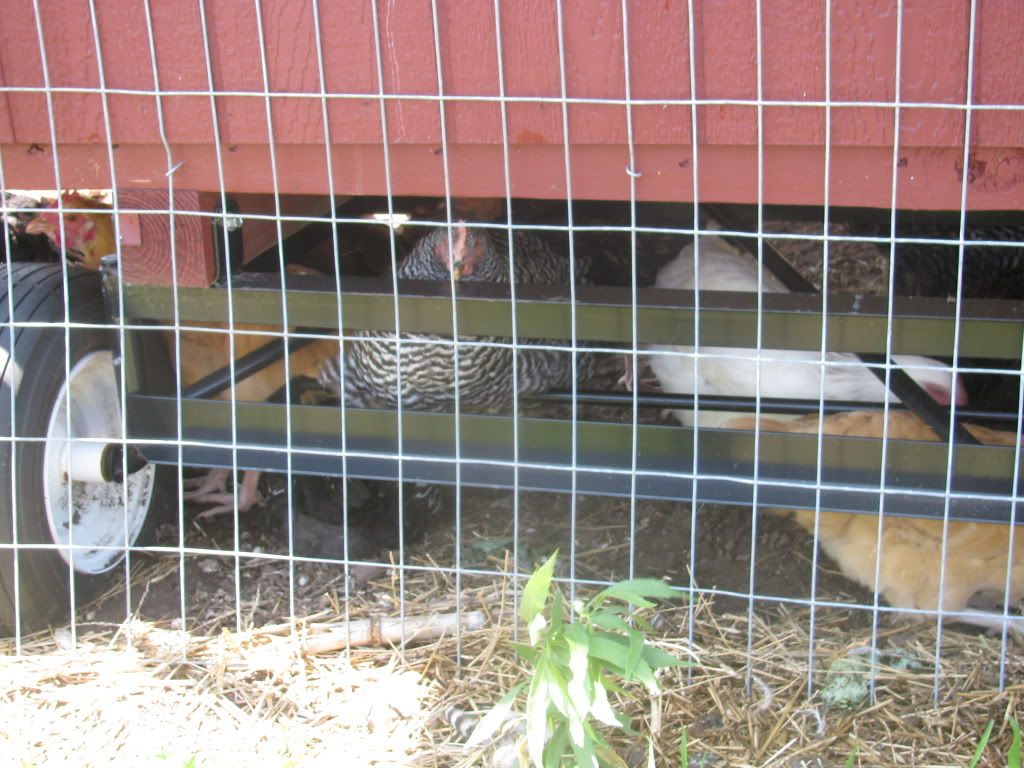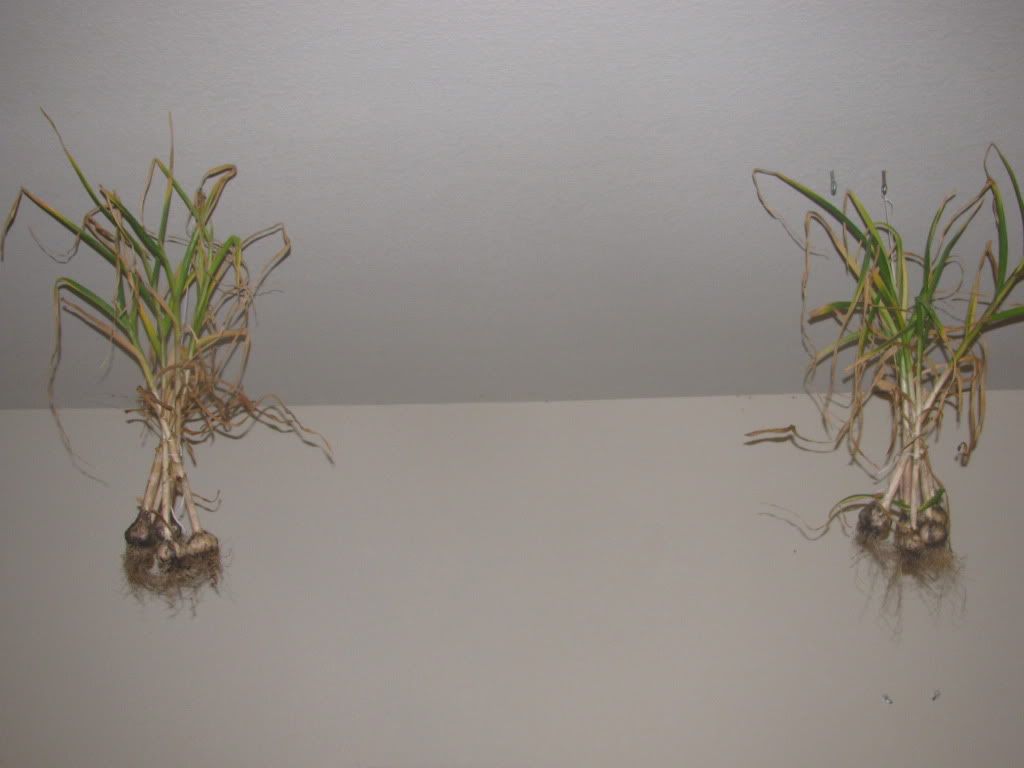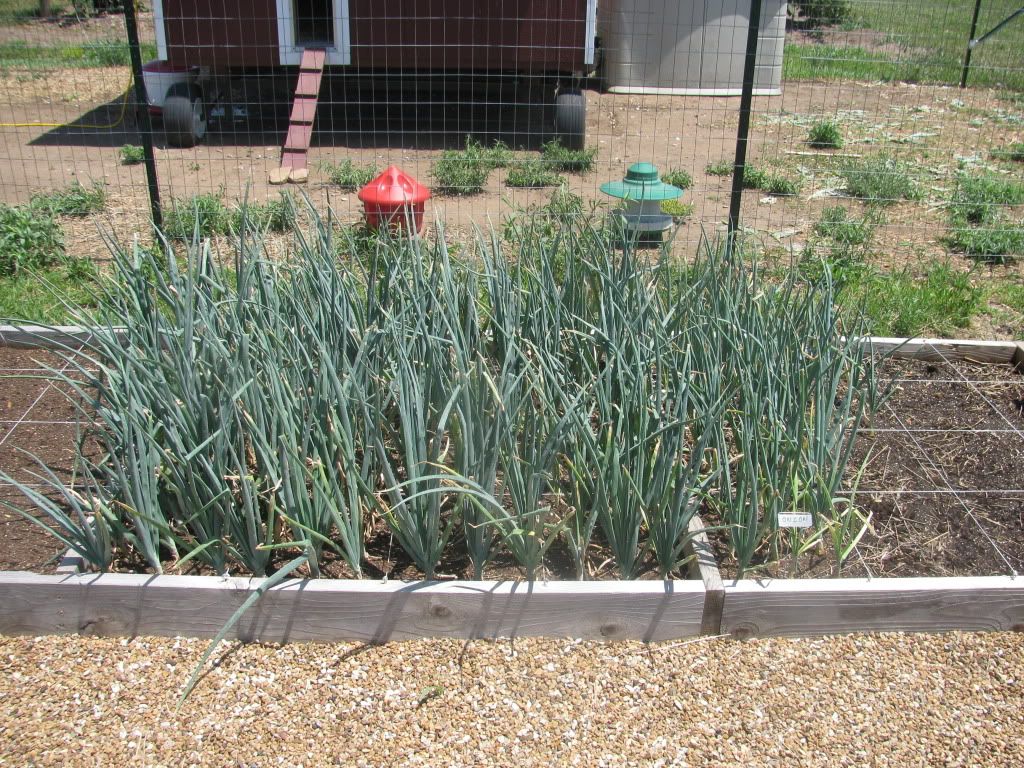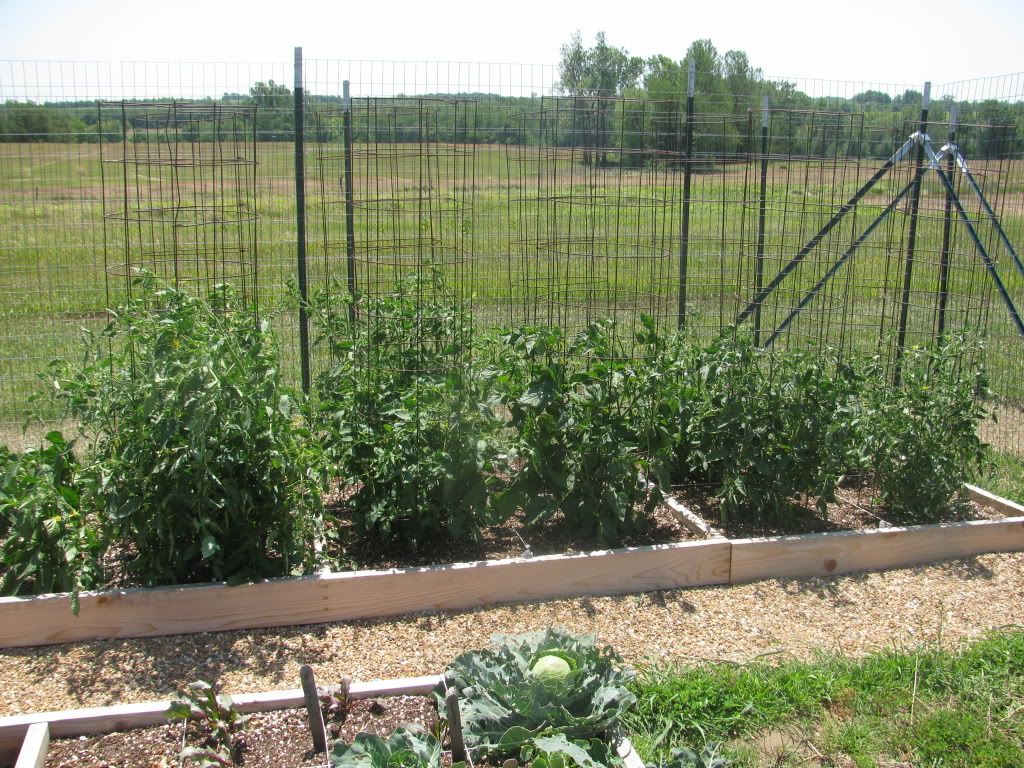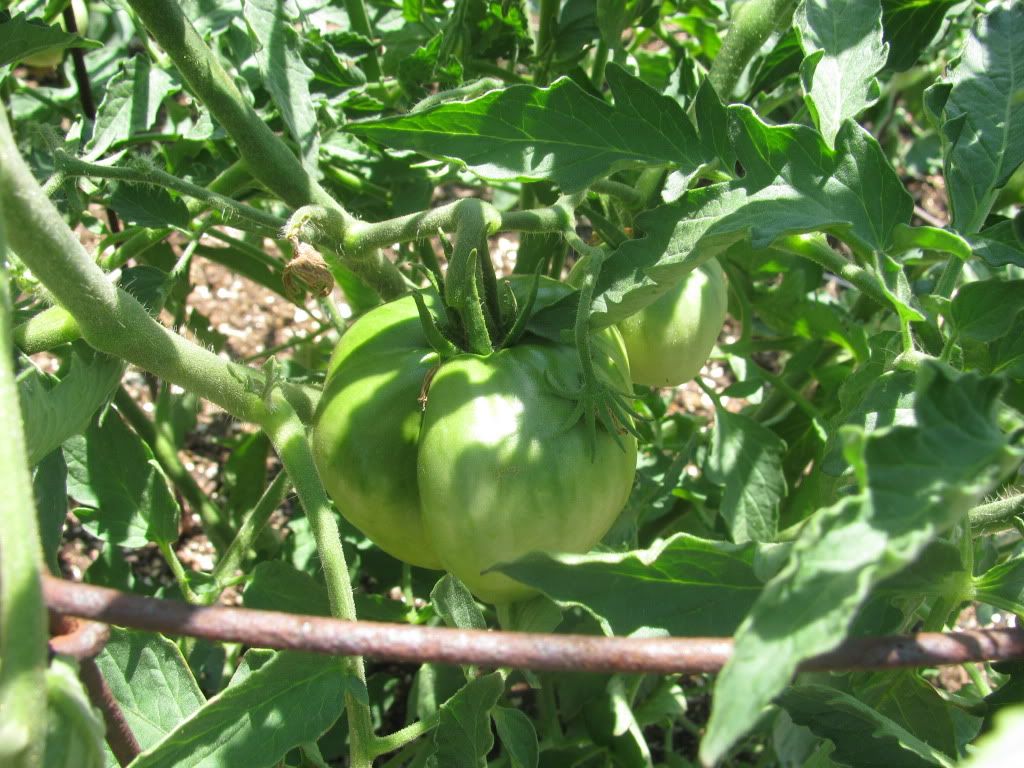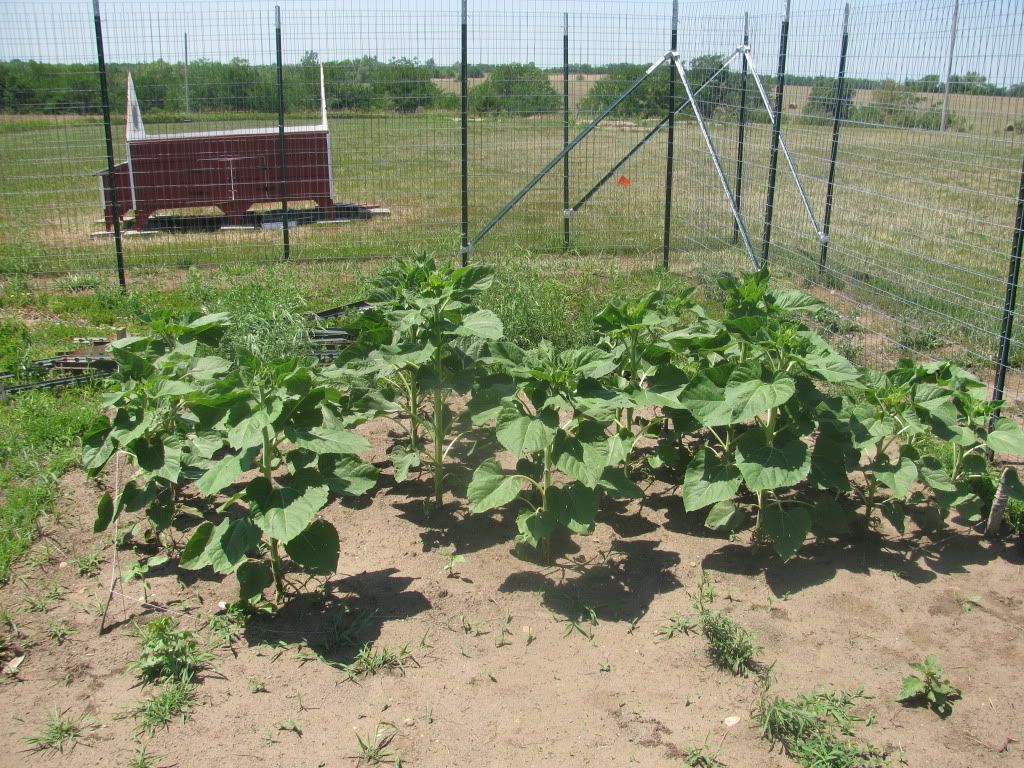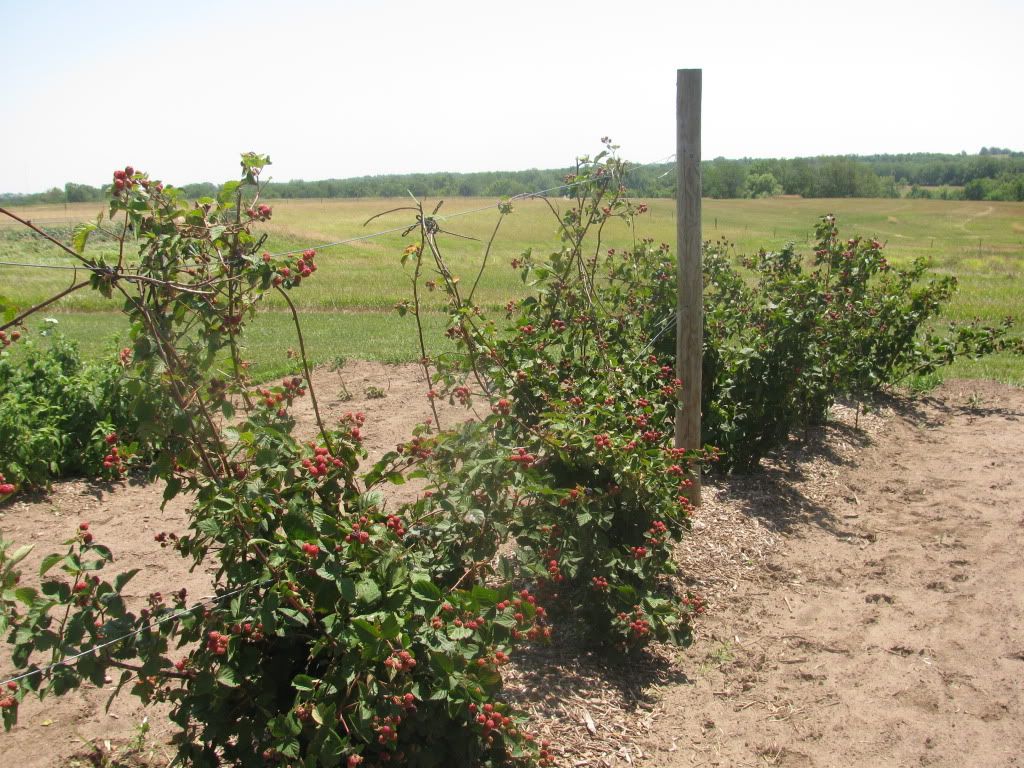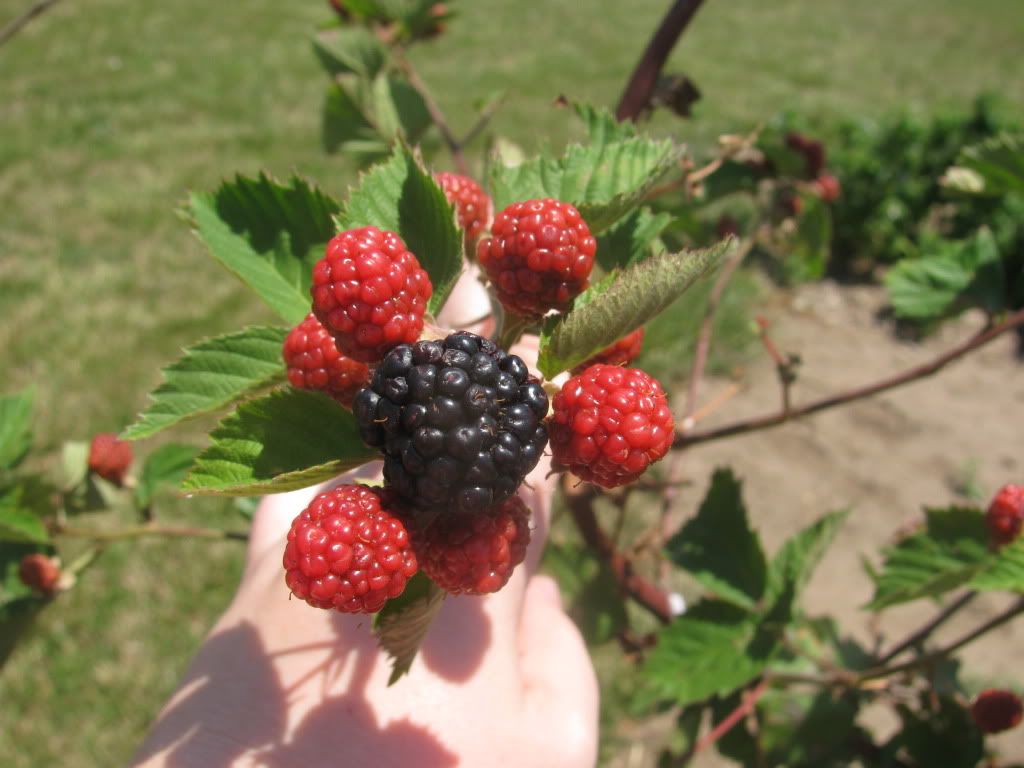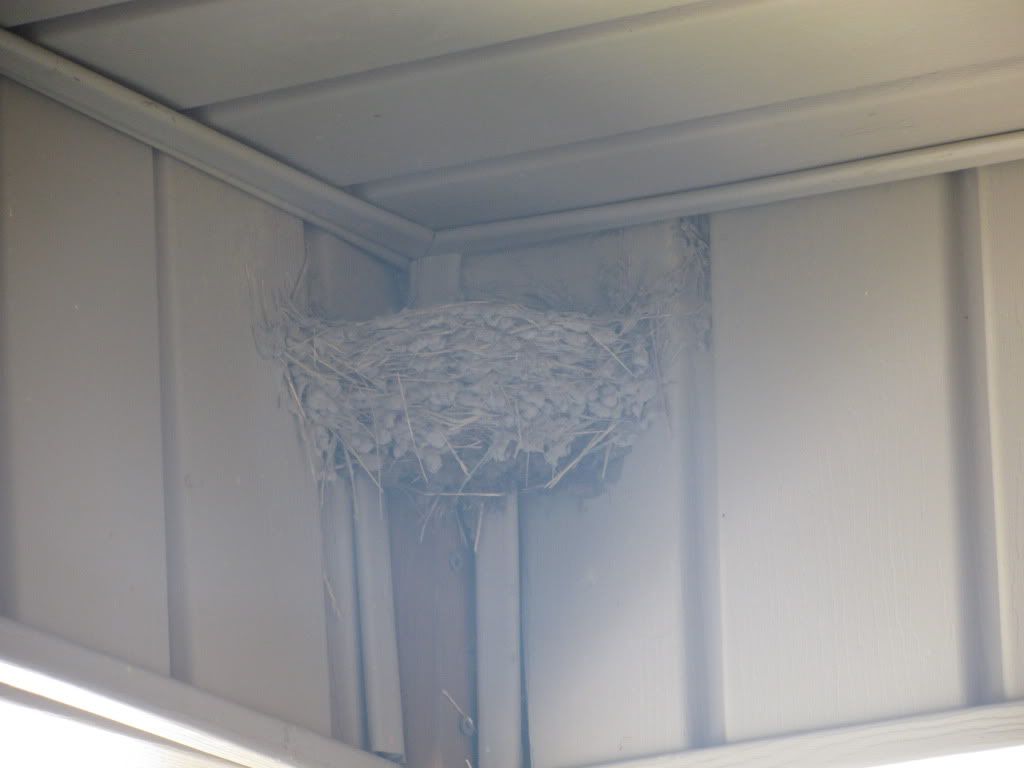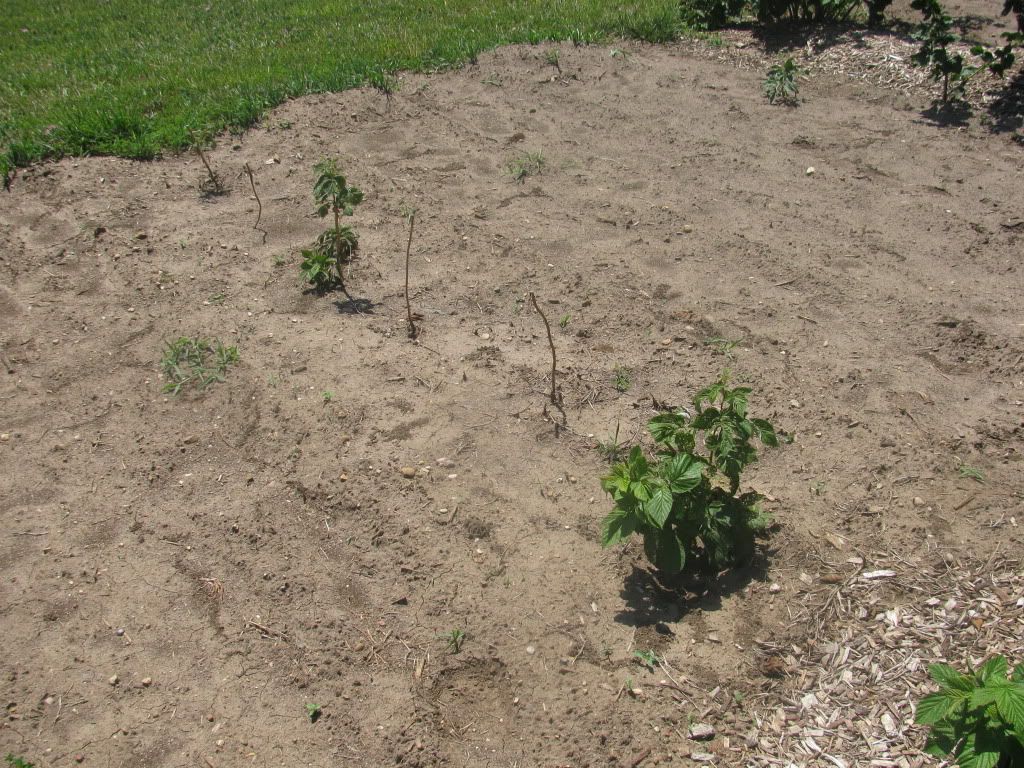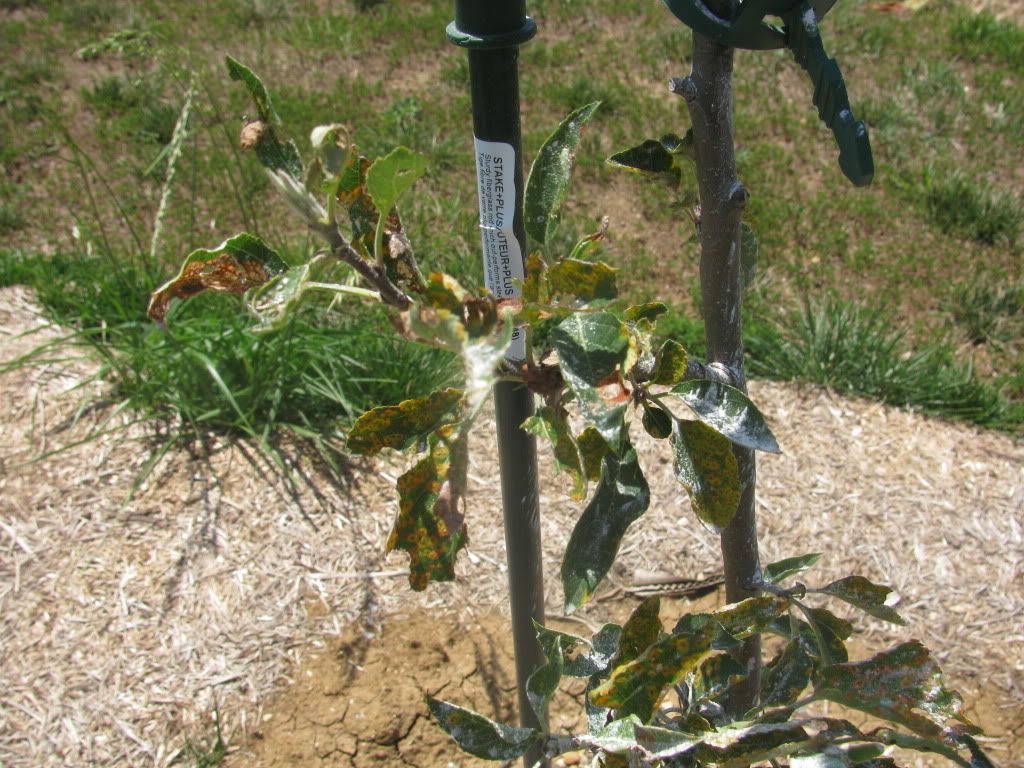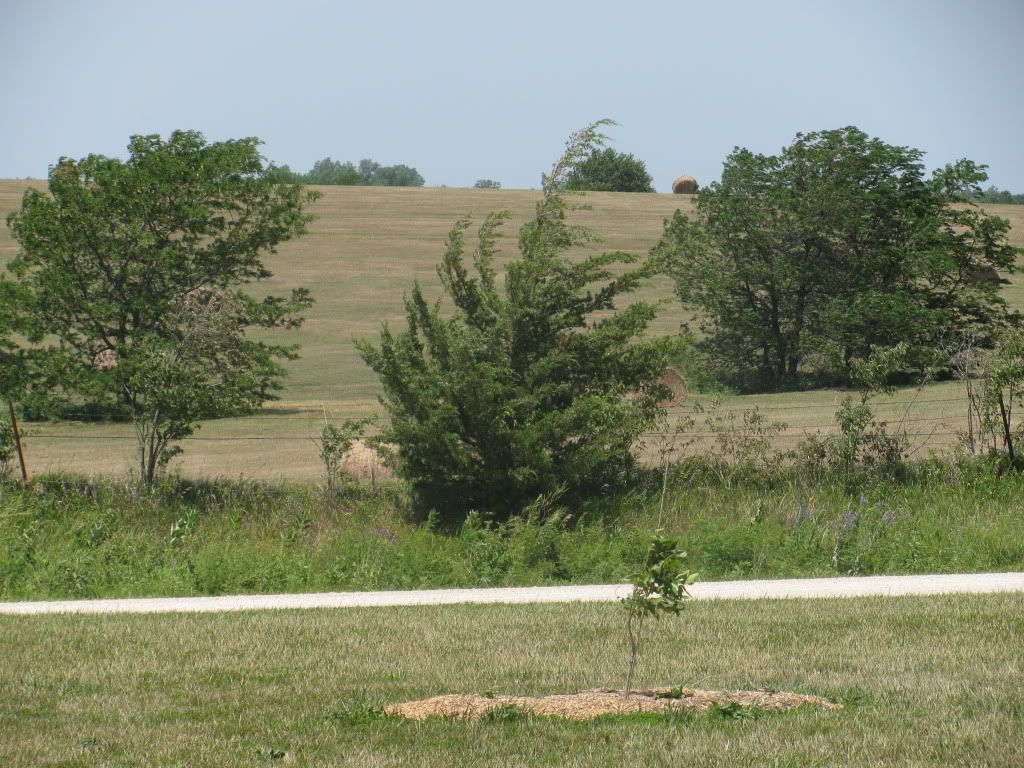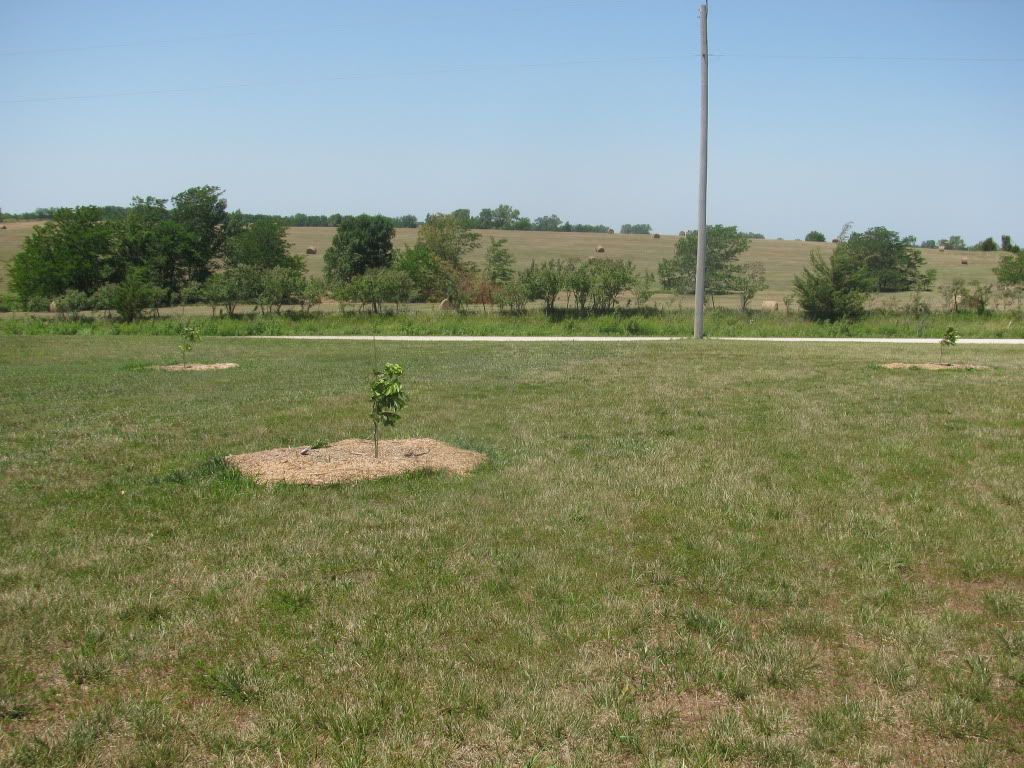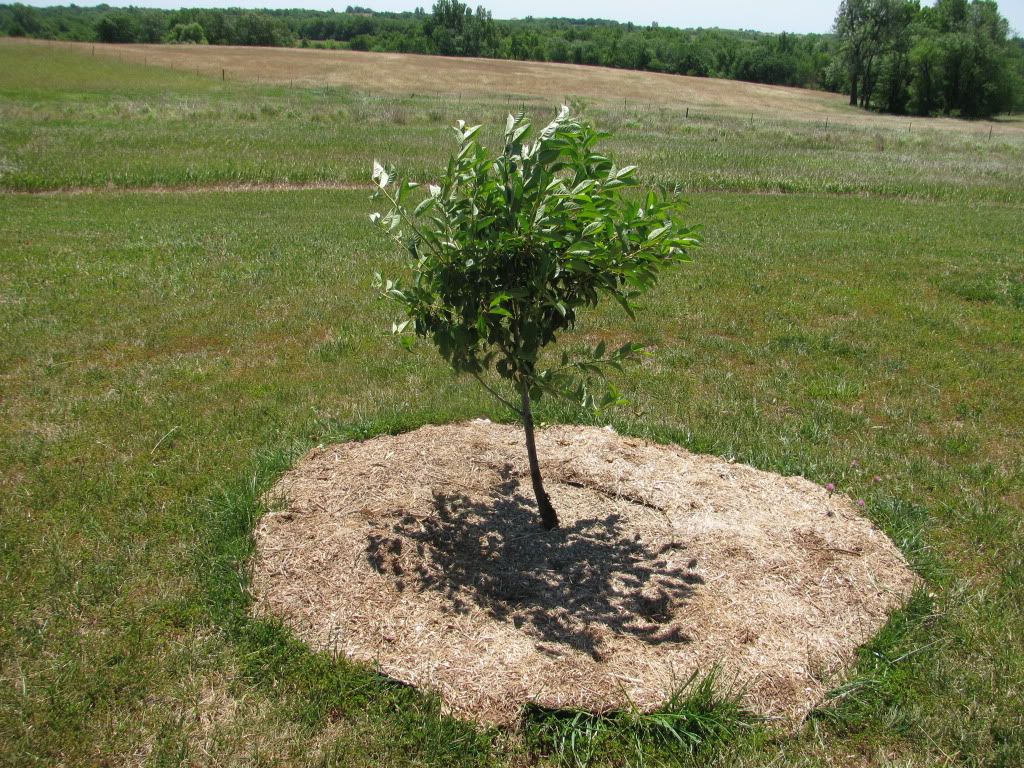 |
| Foraging in the cool of the evening |
My chickens are 15 weeks old and haven't given me a single egg yet. If they were from one of the high-output hybrid breeds, I might expect my first eggs in the next week or so. Since they are heritage breeds, I have longer to wait. It can take up to the age of 24 weeks or so to start laying. Most will begin in the 20 to 22 week range.
If I desired, I could start butchering the chickens. Most of them have reached a size where they would dress out as a nice sized carcass. We are not planning to eat any of our chickens yet but will probably cull them for the soup pot when they slow down their egg production in a couple of years.
Other than being ornamental and fun to watch, our chickens have already done a lot for our homestead. They have made a massive dent in our food and garden waste. They eat food that would normally get scraped off a plate into the trash or garbage disposal. They covet the strawberries that the ants got to before we did and slurp down tomato hornworms like spaghetti. How cool is it that the very stuff we throw away can be turned back into yummy eggs and meat?
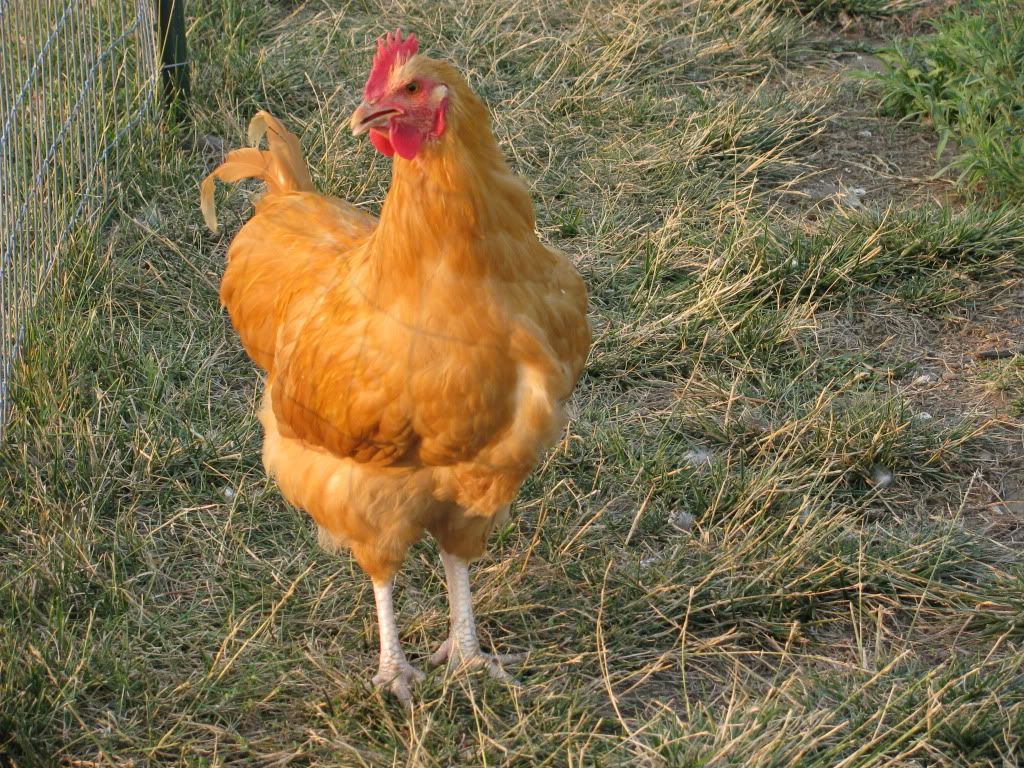 |
| Our roo-in-training |
Here's our Buff Orpington cockerel. (Until one year of age, boy chickens are referred to as cockerels. After one year old, they get the venerable title of rooster.) I was slightly leery of purposely ordering a future rooster since they have a reputation for being mean. I really want the option of hatching our own chicks, however, so a rooster was a necessity. So far, he seems to be pretty nice and I think he is awfully handsome, too.
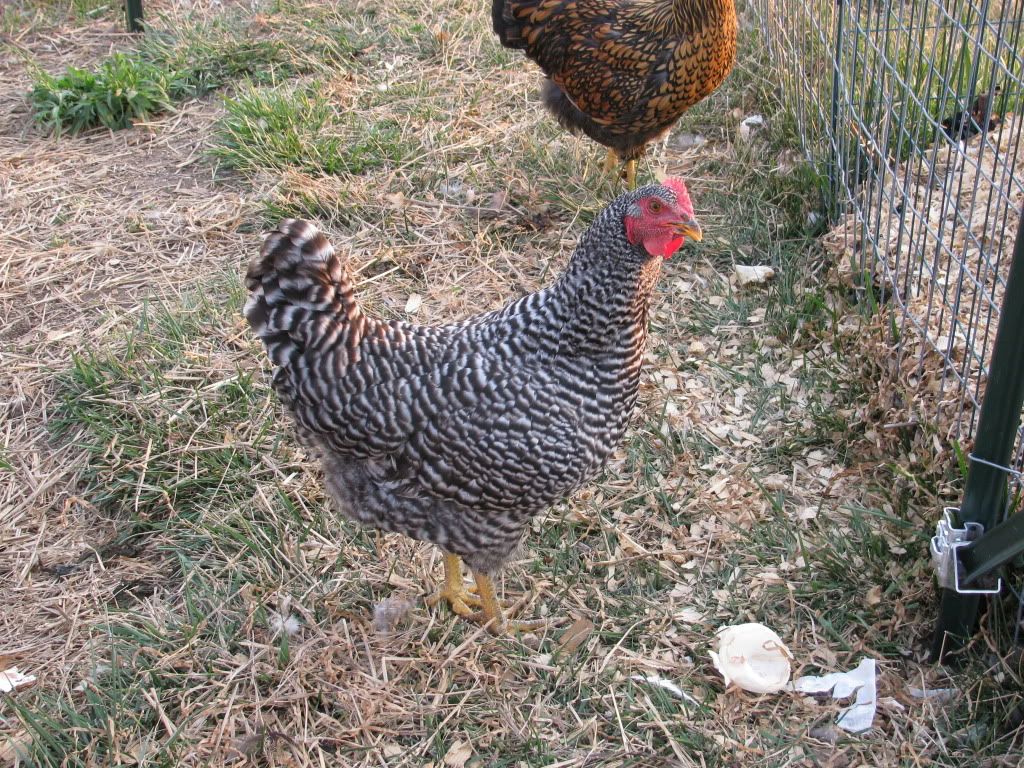 |
| One of our Barred Plymouth Rock pullets |
My favorite chickens are our Barred Rocks. They aren't an exotic breed, but I really think they are pretty and they are the most friendly of our chickens. This one is pretty advanced in her comb and wattle development, so it may be that she will be one of the first of our pullets to begin laying.
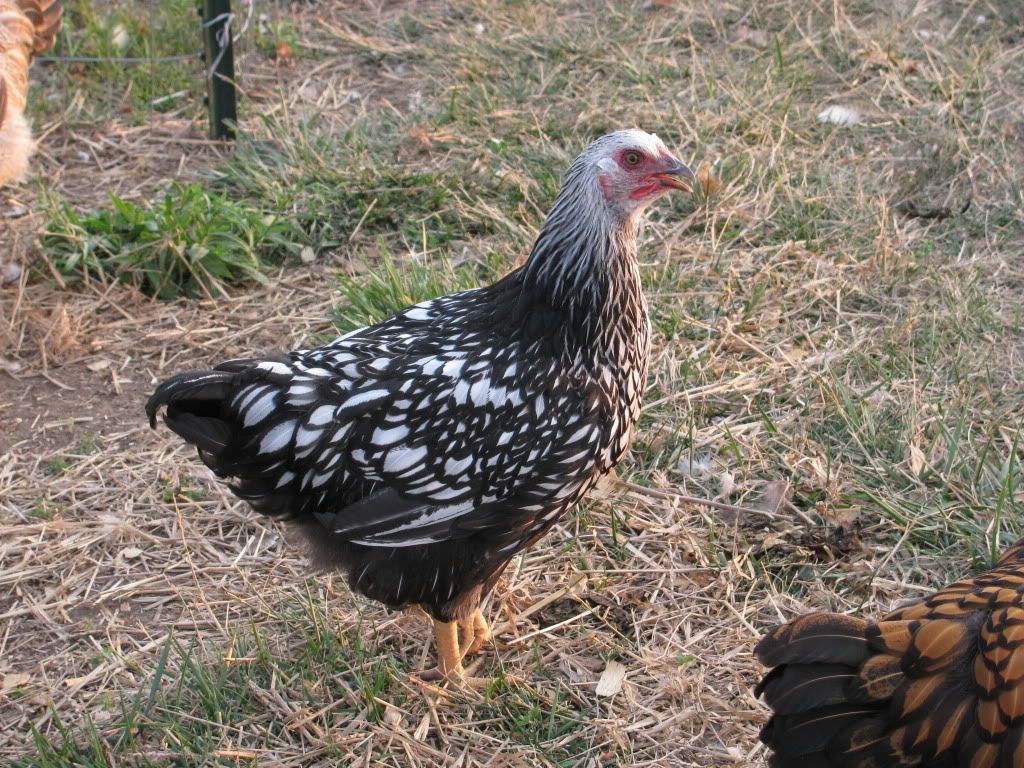 |
| "Little Silver" the Silver Laced Wyandotte |
It seems like I lucked out when I pulled the last Silver Laced Wyandotte out of the bin of straight-run birds at Tractor Supply Company. I'm pretty certain I ended up with a pullet. I think she's pretty. But then again, I think all my birds are pretty. :)
 |
| A Gold Laced Wyandotte |
Here's a Gold Laced Wyandotte for comparison. None of my Wyandottes are particularly friendly. But none of them are as skittish as the Silver Lakenvelder.
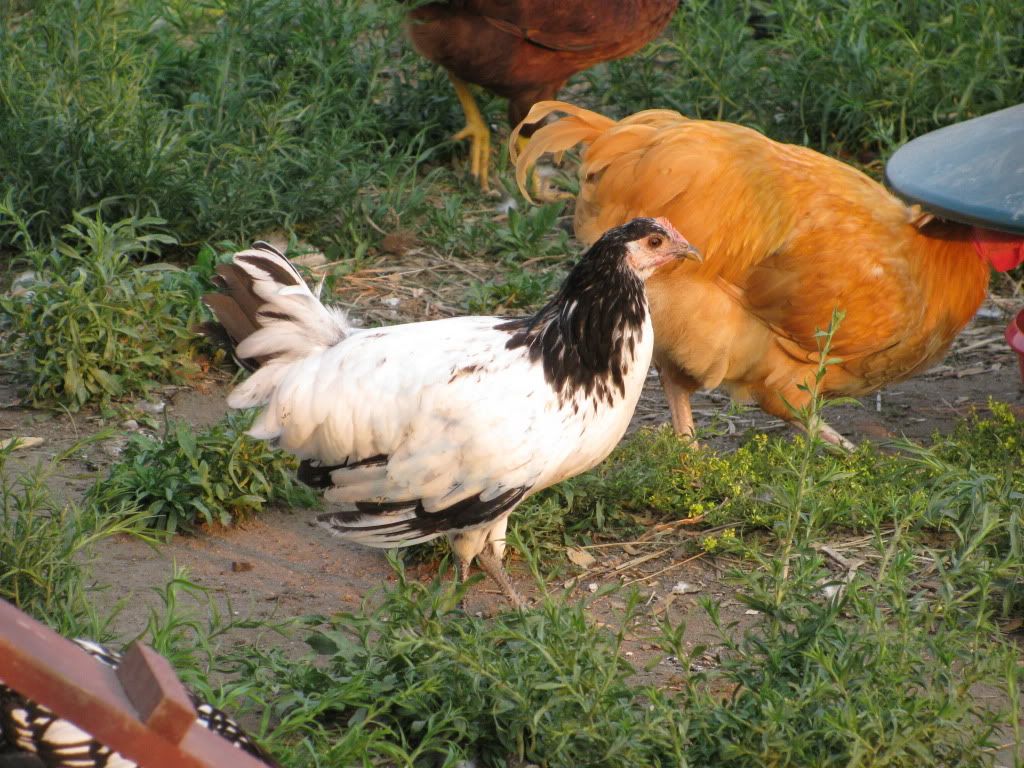 |
| "Noodles" the Silver Lakenvelder |
Noodles is a complete nutcase. She is convinced that humans are evil and she does her best to stay out of sight when I'm around. This is the one breed of chicken I wouldn't get again. I don't need lap chickens, but I prefer to work around birds that aren't so neurotic and skittish.
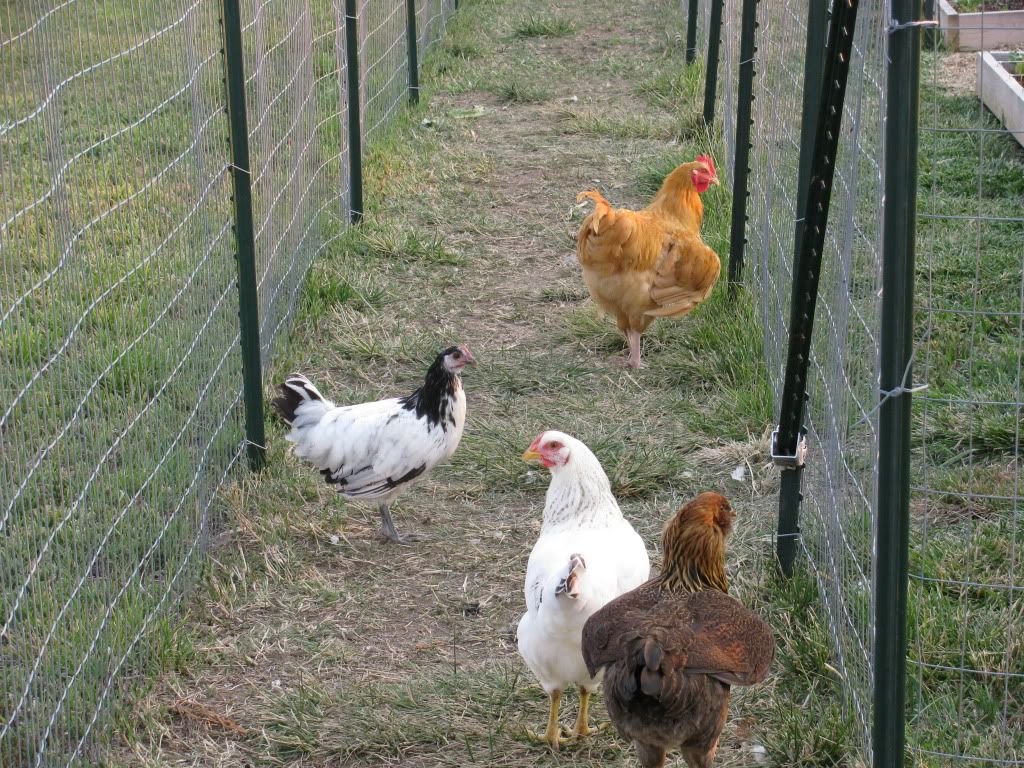 |
| The chicken moat turned out to be a great idea |
Here's Mr. Man leading some of the ladies (Noodles, Prissy the Delaware, and Tawny Kitaen the Easter Egger) down the moat. The chickens keep the weeds and grass down just enough that they don't kill it completely but we don't have to mow the moat. They hunt insects and eagerly wait for the treats of bugs and weeds we throw into the moat from the garden.
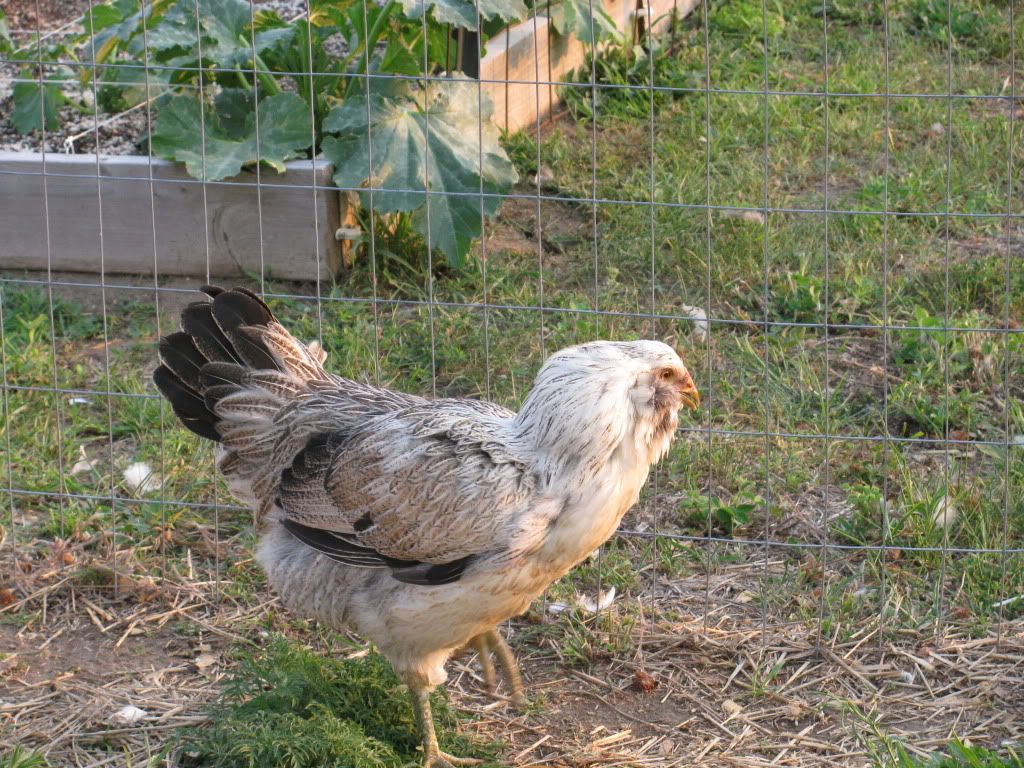 |
| "Lita Ford" the Easter Egger |
None of our chickens were supposed to get proper names under the theory that it's easier to eat something that you haven't named. Well, the kids started naming them and then I got into the act. I thought the Easter Eggers looked like they had big 80s hair, so I named them after 80s icons Tawny Kitaen and Lita Ford. I've started to wonder if Lita Ford is actually a cockerel, though. Any guesses?
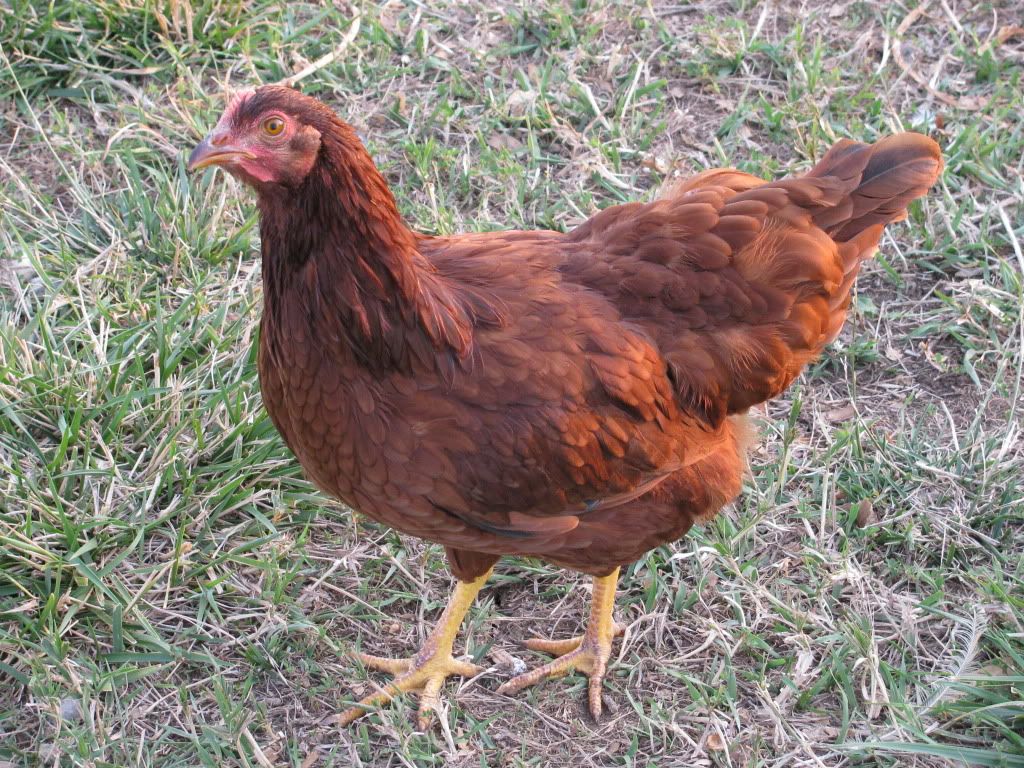 |
| "Little Red" the Rhode Island Red |
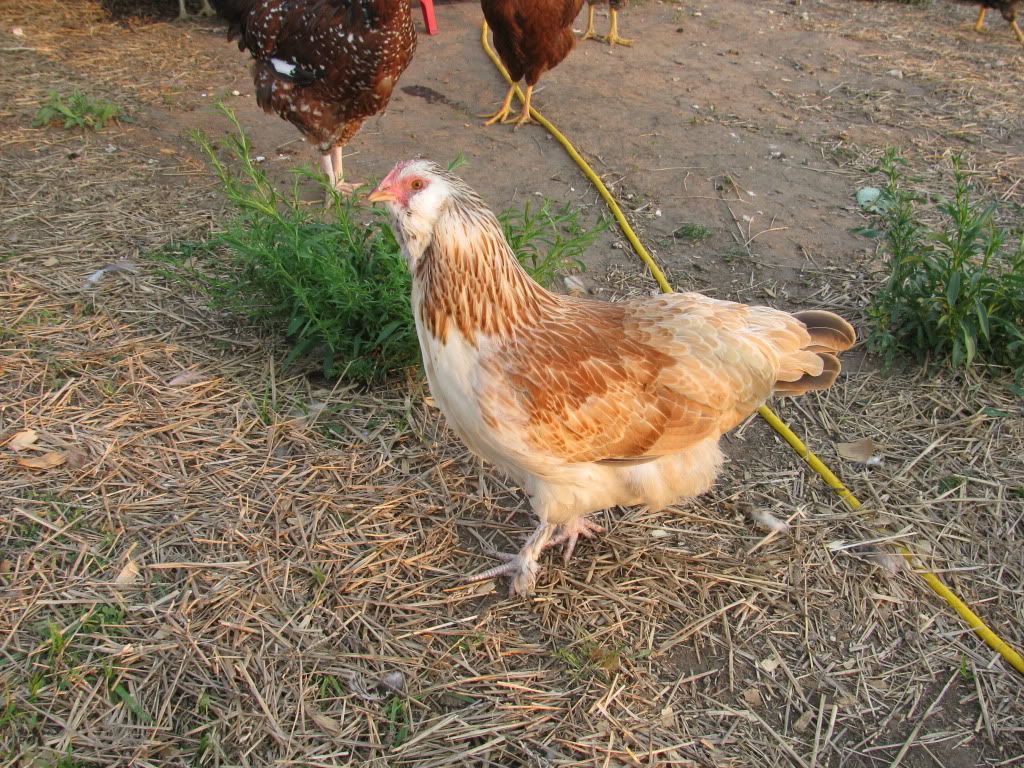 |
| "Bella" the Salmon Faverolle |
Poor Bella. Faverolles have feathers on their legs and hers always look messy and muddy. I think I'll stay away from feather-legged breeds in the future. She's a nice bird otherwise.
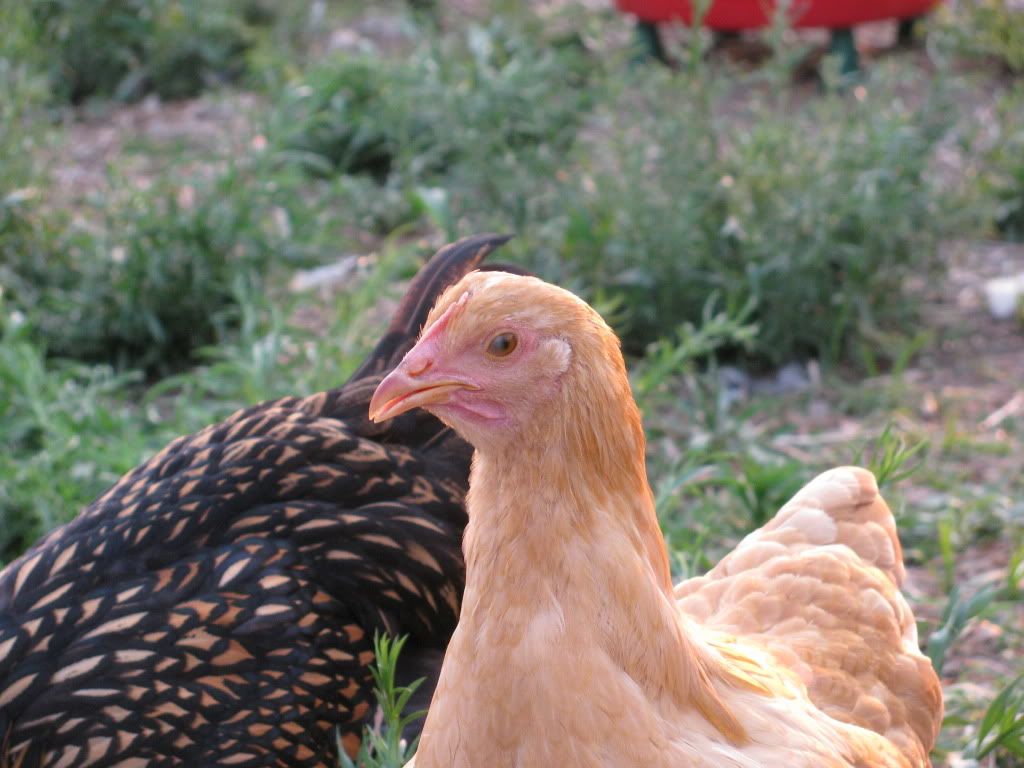 |
| A Buff Orpington pullet |
The Buff Orpingtons just kind of blend in with the crowd. From the looks of their comb and wattle development, they will be one of the later birds to begin laying. Compare this photo to the one of the Barred Rock above.
In the next week or so, I will remove the barricade that is keeping the chickens out of the nest boxes. I'll place nesting material and fake eggs in the the boxes to encourage them to lay there when they start feeling the urge. We will also be moving the turkeys into the chicken moat and our duck eggs will hatch. Plenty more action in the poultry department on our homestead!
Fellow Poultry Keepers: What's new in your flock?


